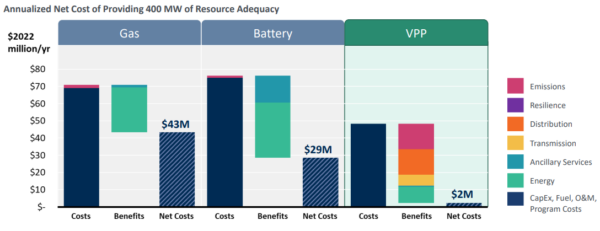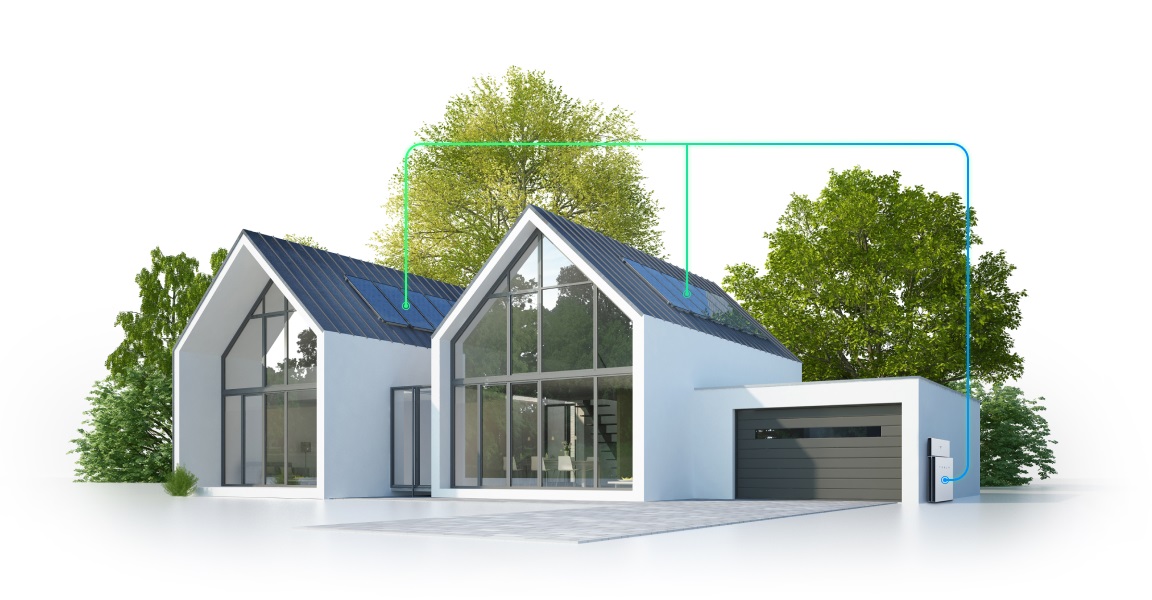Over the last decade the U.S. has spent over $120 billion on 100 GW of new generation capacity with the primary purpose of providing resource adequacy.
A new study by consulting firm The Brattle Group explores the cost and critical resource adequacy needs from virtual power plants (VPPs) as it relates to net savings on the U.S. utility grid.
VPPs are networks of distributed energy resource (DER) portfolios, which can include rooftop solar, smart thermostats, smart water heaters, electric vehicles, and distributed batteries. The VPP network is actively controlled by utilities and energy service providers to benefit consumers, the power system, and the environment.
The Brattle report, titled Real Reliability: The Value of Virtual Power, models the value and performance of a VPP network versus conventional resource adequacy options. The consulting group compares the net cost of providing 400 MW of resource adequacy from three resource types: a natural gas peaker, a grid-interconnected battery system, and a VPP composed of residential demand flexibility technologies.
The 400 MW resource adequacy study involved a utility with 1.7 million residential customers. That utility had 5.7 GW of gross peak demand, 3.6 GW of net peak demand of wind and solar resources, while its generation forecast was to generate 50% renewable energy by 2030, representing a growing trend toward decarbonized power supply. The sample utility is conservatively selected to represent challenging performance requirements for a VPP, such as a need for resource adequacy performance during many hours in both summer and winter.

The chart above shows the annual cost savings between the sample VPP network and systems comprised of just gas-powered and battery systems.
The study also identifies key near-term activities for enabling the deployment of VPPs, which currently are adopted well below their market potential.
“With the massive growth in consumer adoption of clean, flexible energy technologies that is expected over the coming decade, virtual power plants are no longer a virtual reality,” noted Ryan Hledik, a Brattle principal and co-author of the study. “There is real potential to leverage these technologies to improve reliability, enable decarbonization, and reduce costs to consumers. But barriers still need to be overcome.”
Key findings from the Brattle study include:
- Real reliability: A VPP leveraging residential load flexibility technologies could perform as reliably as conventional resources
- Cost savings: The net cost to the utility of providing resource adequacy from a VPP is roughly 40%–60% of the cost of the alternative options; 60 GW of VPP deployment could meet future U.S resource adequacy needs at $15–$35 billion less than the cost of the alternative options over the ensuing decade
- Additional benefits: 60 GW of VPP systems could provide over $20 billion in additional societal benefits – such as those related to emissions and resilience – over ten years
“Google already enables one of the largest VPPs in the U.S. by helping our thermostat users avoid carbon and earn rewards through the Rush Hour Rewards (RHR) program and our recently launched Nest Renew service,” said Parag Chokshi, director of product strategy and operations, Google Nest. “We believe the continued growth and support of VPPs in the residential sector is crucial to continue building towards a decarbonized, reliable grid of the future.”
According to the study, nine states are currently running VPP systems for resource adequacy testing, as well as Puerto Rico. Utilities that are integrating solar with energy storage in VPP networks include Pacific Gas & Electric (30 MW solar-plus-storage), Portland General Electric (4 MW behind-the-meter battery VPP), Green Mountain Power (4,000 batteries with 55 MW capacity) and Hawaiian Electric (80 MW solar-plus-storage system).
This content is protected by copyright and may not be reused. If you want to cooperate with us and would like to reuse some of our content, please contact: editors@pv-magazine.com.









By submitting this form you agree to pv magazine using your data for the purposes of publishing your comment.
Your personal data will only be disclosed or otherwise transmitted to third parties for the purposes of spam filtering or if this is necessary for technical maintenance of the website. Any other transfer to third parties will not take place unless this is justified on the basis of applicable data protection regulations or if pv magazine is legally obliged to do so.
You may revoke this consent at any time with effect for the future, in which case your personal data will be deleted immediately. Otherwise, your data will be deleted if pv magazine has processed your request or the purpose of data storage is fulfilled.
Further information on data privacy can be found in our Data Protection Policy.